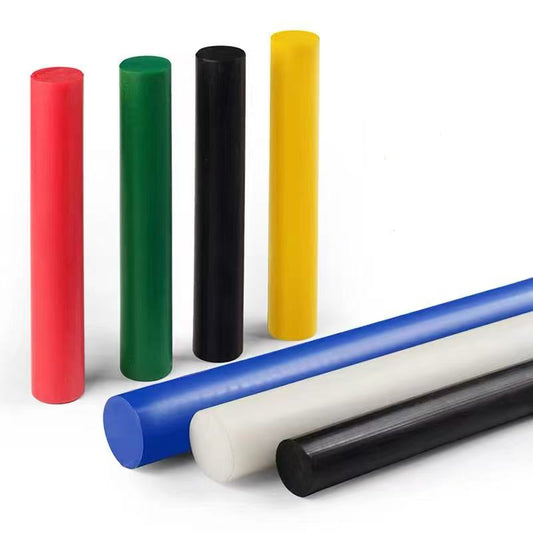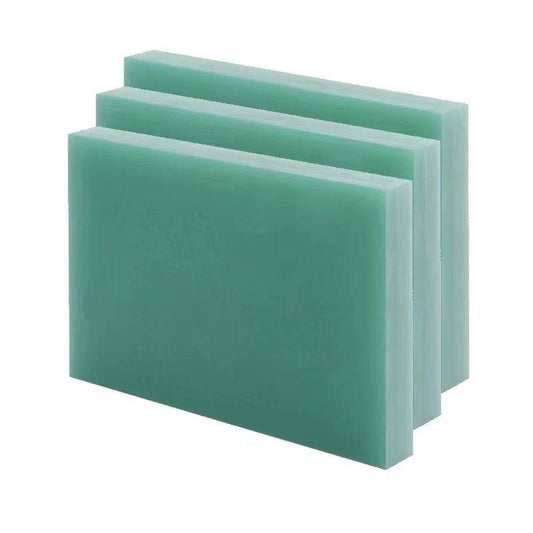Selecting the appropriate plastic material for custom manufacturing projects is more than just a technical decision—it's a strategic investment in product quality, operational efficiency, and long-term cost savings. Two of the most prominent and widely adopted materials for industrial and manufacturing applications today are High-Density Polyethylene (HDPE) and Ultra-High Molecular Weight Polyethylene (UHMWPE). While both derive from the polyethylene family, their unique properties significantly influence their suitability for specific applications. As a manufacturer, understanding the distinct advantages and limitations of each is critical to ensuring optimal component performance, durability, and overall success.
🎉🎉🎉Limited Time Offer Use code: QR4GNY08SHVR at checkout and enjoy a special discount on your entire order! 👉 UPE plastic

Comparative Analysis – HDPE vs UHMWPE in Custom Fabrication
In custom component fabrication, machinability can substantially impact productivity and cost-efficiency. HDPE is renowned among manufacturers for its excellent machinability, facilitating straightforward CNC machining, routing, welding, and thermoforming. Its relatively low melting point and predictable behavior under fabrication processes make it especially advantageous for rapid prototyping and high-volume production. HDPE’s easy machinability translates to reduced labor costs, shorter production cycles, and minimal tool wear, thus offering significant economic benefits for projects requiring efficient turnaround times.
Conversely, UHMWPE, while more challenging to fabricate due to its exceptionally high molecular weight and extremely low friction characteristics, excels in specialized applications. Machining UHMWPE requires precise control of cutting parameters, specialized tooling, and often slower operational speeds to prevent deformation and maintain dimensional accuracy. However, once mastered, UHMWPE's machinability challenges are significantly outweighed by its superior performance in high-wear and friction-intensive environments. Its unparalleled resistance to abrasion and impact makes it an indispensable material for components like conveyor guides, wear strips, and bearing surfaces, where prolonged durability significantly reduces maintenance intervals and replacement costs.
Understanding Material Properties and Performance Metrics
HDPE and UHMWPE present distinct sets of material properties that manufacturers must carefully evaluate against their specific application requirements. HDPE exhibits strong structural integrity, commendable tensile strength, and good chemical resistance, making it suitable for applications such as chemical containment, storage tanks, and structural support panels. Its rigidity and stability under moderate load conditions often fulfill requirements in general industrial applications where cost-effectiveness and material reliability are paramount.
UHMWPE, however, stands out significantly with its exceptional impact resistance and wear performance. Its molecular composition provides remarkable resistance to abrasive environments, mechanical stress, and repeated impact, making UHMWPE ideal for rigorous applications demanding consistent performance under severe operational conditions. Furthermore, UHMWPE’s self-lubricating properties reduce friction and maintenance demands, offering further long-term operational benefits. Components fabricated from UHMWPE can handle heavy-duty usage in industries such as mining, material handling, and manufacturing assembly lines, where material failure translates directly into operational downtime and substantial financial implications.

Cost-Benefit Evaluation in Real Manufacturing Scenarios
A thorough cost-benefit analysis of HDPE and UHMWPE goes beyond initial purchase prices, encompassing machining costs, operational efficiencies, and maintenance considerations. HDPE’s lower initial cost and ease of machining provide immediate financial benefits, especially for projects with limited budgets, rapid prototyping requirements, or parts not subjected to intensive wear or mechanical stress.
In contrast, UHMWPE, while demanding higher initial investments and specialized machining techniques, often delivers substantial long-term savings. Its superior durability significantly prolongs component lifespan, thereby reducing the frequency of replacements and associated downtime. In industries where the cost of operational interruptions is high, the initial investment in UHMWPE can quickly translate into substantial financial advantages. Consequently, manufacturers should carefully balance immediate budget constraints against the anticipated lifecycle performance and associated costs when selecting between these materials.
Industry Applications and Case Studies
Industry-specific examples highlight the effectiveness of HDPE and UHMWPE, underscoring the necessity of material alignment with operational requirements. HDPE finds extensive use in food processing environments, marine applications, and outdoor structures due to its chemical resistance, ease of maintenance, and overall affordability. For instance, food-grade cutting boards and chemical storage containers benefit from HDPE’s non-toxic, FDA-compliant nature.
Conversely, UHMWPE is often the material of choice in sectors requiring extreme resilience and longevity under harsh conditions. Its widespread adoption in conveyor systems, wear components for manufacturing machinery, and automotive bushings illustrates its value. A notable example is its use in conveyor belt guide rails within manufacturing plants, where UHMWPE dramatically reduces wear and extends replacement intervals, minimizing costly production downtime and labor expenses.
Environmental and Regulatory Compliance Considerations
As environmental sustainability and regulatory compliance become increasingly critical in material selection, both HDPE and UHMWPE offer noteworthy advantages. HDPE's recyclability and compliance with FDA regulations make it a preferred choice in industries emphasizing sustainable practices and food safety.

Similarly, UHMWPE complies with stringent FDA standards and offers remarkable chemical inertness and stability under variable environmental conditions, positioning it ideally for applications in pharmaceutical, food processing, and chemical manufacturing industries. Its resistance to degradation in chemically aggressive or challenging environmental scenarios ensures consistent regulatory compliance and aligns with contemporary environmental stewardship objectives.
Making the Right Material Choice for Your Custom Components
Ultimately, choosing between HDPE and UHMWPE demands a comprehensive evaluation of your project's specific requirements, including machinability, operational environment, lifecycle costs, and regulatory obligations. By understanding the nuanced differences between these two widely adopted industrial plastics, manufacturers can confidently select the material best suited to their needs, ensuring superior component performance and cost-effective production outcomes.
Ready to optimize your material selection and custom component manufacturing?
Explore our comprehensive HDPE machining solutions, specialized UHMWPE custom fabrication services, or browse our UHMWPE product catalog. Learn about our extensive plastic machining capabilities, or contact our team for tailored consultations today.
Selecting the right material today ensures a successful manufacturing future. Let’s collaborate to produce high-quality, durable, and efficient custom components tailored precisely to your requirements.




